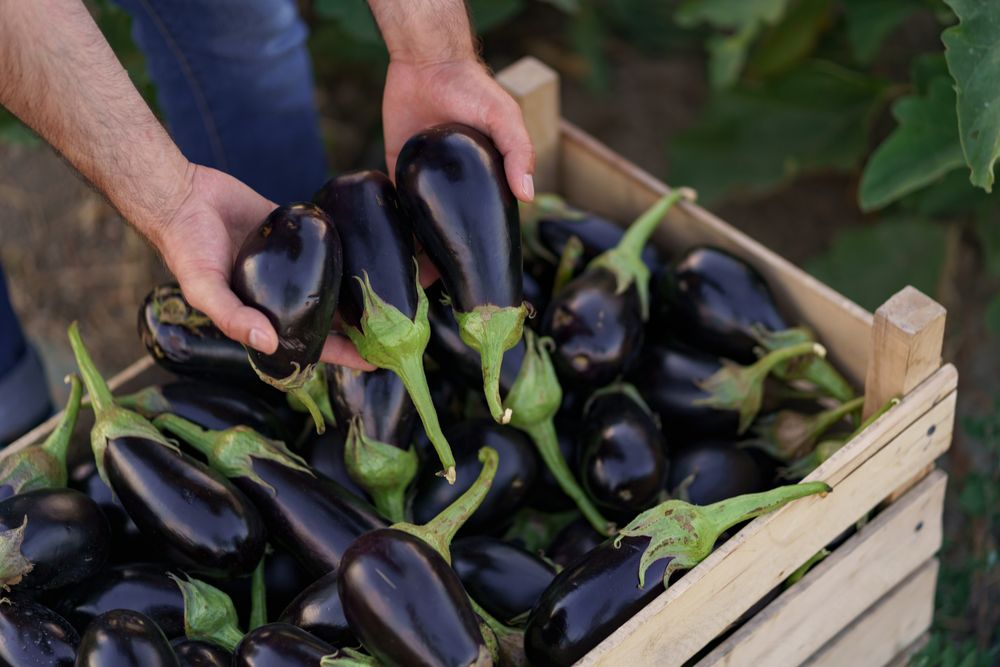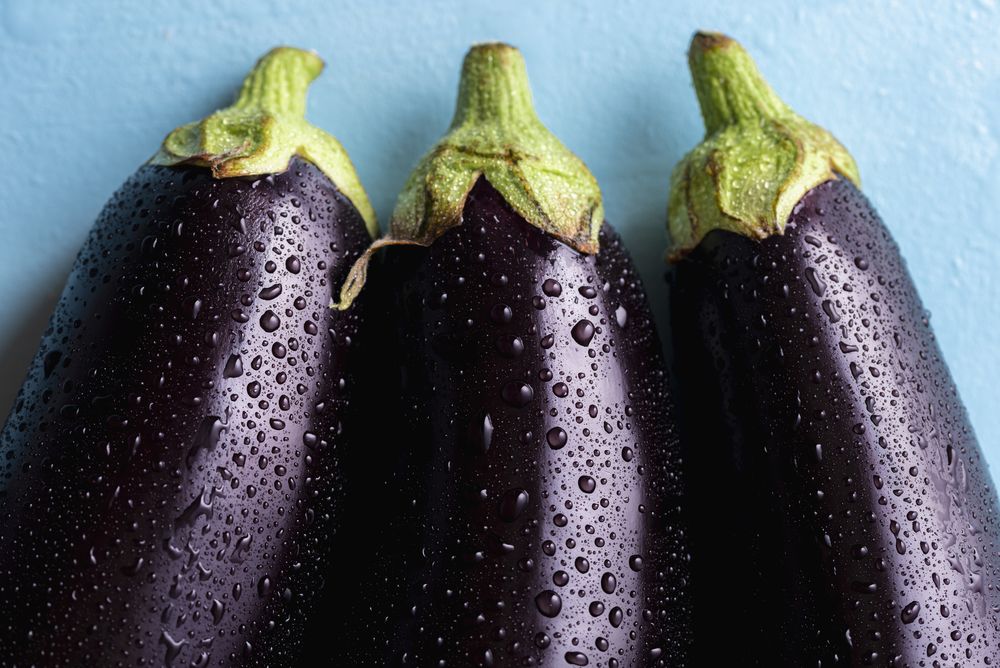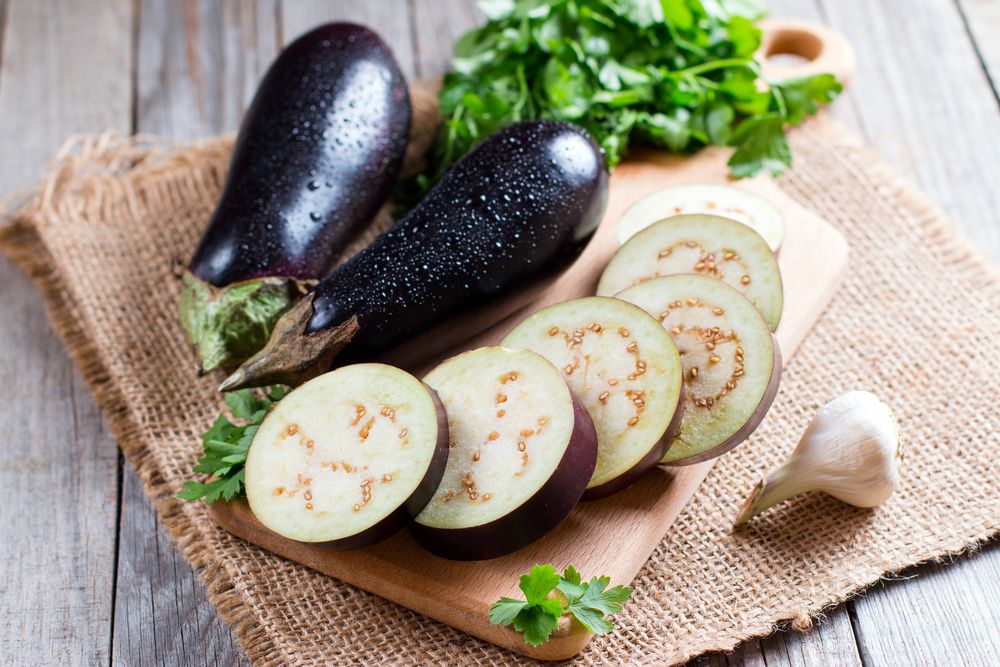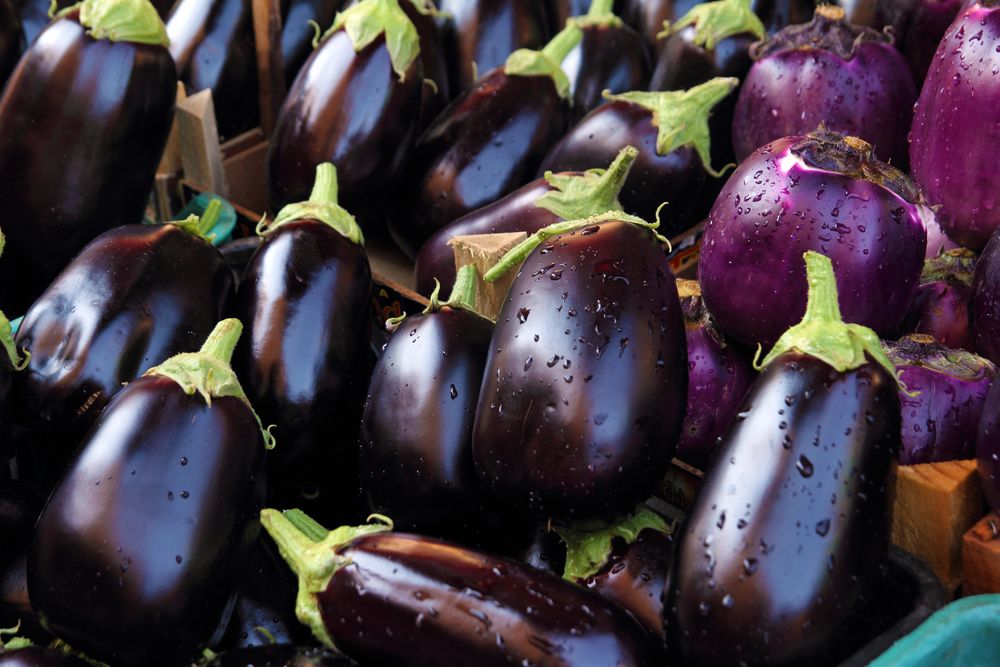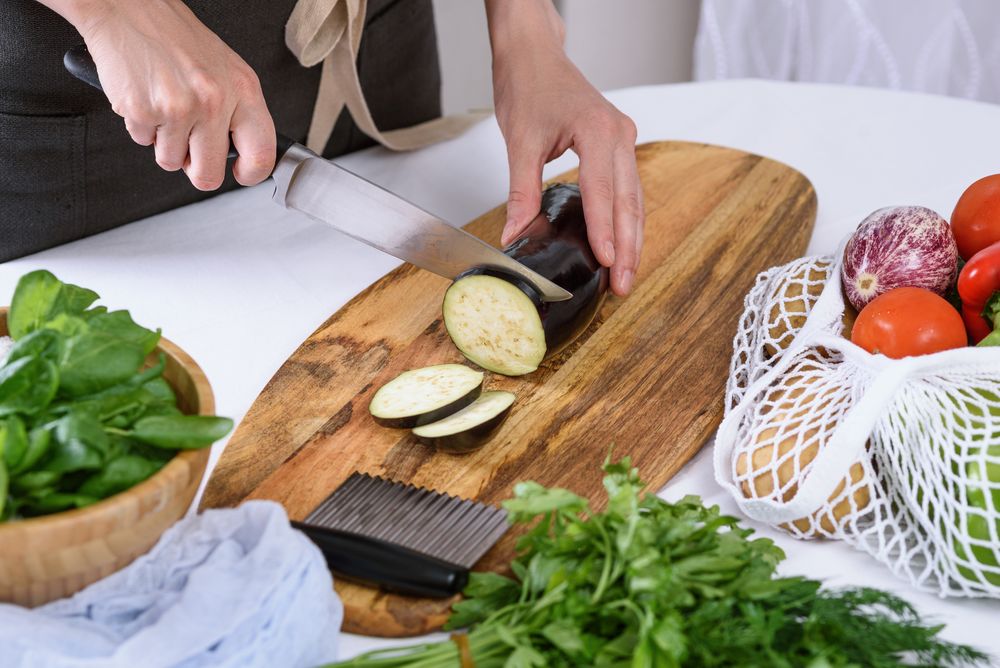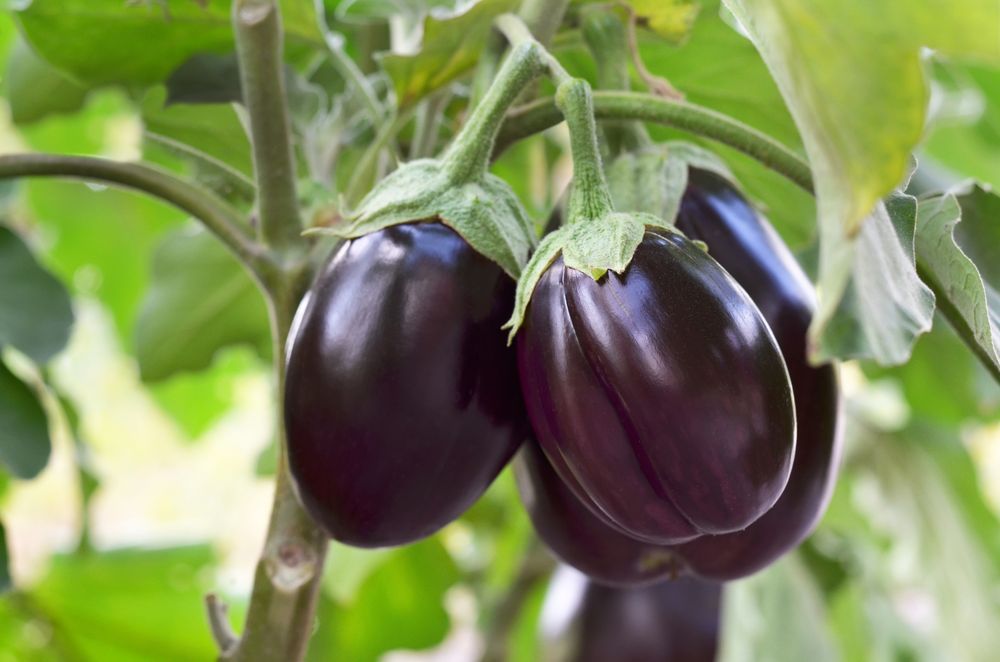How to Store Eggplant Safely So That It Lasts Longer
If you love eggplant but hate how it goes bad so quickly, check out our tips and tricks for how to store eggplant so that it stays fresh and delicious longer than ever before. Plus, you’ll be able to enjoy this delicious vegetable all year long.
Eggplant is one of the most versatile ingredients in cooking. It can be roasted, fried, grilled, braised, and even stuffed with meats and cheeses.
However, the vegetable is quite unforgiving, despite its versatility. If not stored properly, an eggplant can spoil quickly and leave you with a limp, soggy mess of mush.
Keep reading to discover the correct ways for how to store eggplants in your home so that you can enjoy them longer!
Eggplant Health Benefits
Eggplants are filled with nutritional benefits. This large purple vegetable provides 6 grams of fiber per one-cup serving, which is about half the daily recommended intake for women and a third of the daily recommended intake for men.
Despite being high in carbohydrates, eggplant contains no sugar or cholesterol, making it an ideal vegetable choice for people with diabetes or who are limiting their intake of fats or sugars.
If you have heart disease, stroke, kidney disease, or gout, eggplants can help support your condition because they contain antioxidants known as nasunin and chlorogenic acid.
Nasunin specifically protects cell membranes from free radicals and may reduce damage to body tissues and organs. Meanwhile, chlorogenic acid helps remove potentially harmful substances from the blood and reduces the risk of heart disease.
Eggplants are also a great source of vitamin K, which your body needs for normal blood clotting and proper bone development, so you definitely do not want to be without this vegetable in your kitchen!
How to Store Eggplant
When fresh eggplants are no longer available during the growing season, there are several ways you can store them at home. Proper storage will allow your eggplants to stay fresh until they are ready to use.
Here are some tips and tricks to follow for storing eggplants:
- These veggies are fragile and bruise easily. Store unripe green eggplants in a paper bag on the counter at room temperature or wrap them loosely with cellophane to avoid bruising the flesh.
- It’s best to keep the part with the stem down and out of direct sunlight.
- Eggplants that are brown on one end mean that they are past their prime and should be thrown away. A squeaky feeling on the skin means that it is underripe.
- Store eggplants upright within other produce to catch any leakage which can cause molding and bruising of other foods.
- Eggplants should be stored at a temperature of 40 degrees Fahrenheit (4.5 degrees Celsius) to 45 degrees Fahrenheit (7 degrees Celsius) for no more than 3 to 5 days.
- If you need to store your eggplants for more than 2 or 3 days before using them, remove the stem end and wrap the veggie tightly in waxed paper. Then, put it inside a resealable plastic bag, label it with its name and date, and freeze for up to 4 months. Thaw before using.
- You can also store cut pieces on parchment-lined baking sheets in the refrigerator for 24 hours before cooking them – this method works best if you plan to cook them within 2 or 3 days.
Can You Freeze Eggplants?
Yes, you can freeze eggplants in several ways.
For example, you can cut eggplants, blanch them for 3 minutes, wrap the whole vegetable in plastic wrap, and transfer them to resealable plastic freezer bags.
Once frozen, the eggplant pieces will keep fresh for 4 to 6 months. To use frozen eggplant, you must first thaw it out and then cook it as usual.
How to Store Cut Eggplant?
If you have already sliced or chopped the eggplant, here’s what you should do:
- Submerge the eggplant pieces in cold saltwater.
- Drain and pat them dry.
- Place them on a sheet pan lined with paper towels.
- Cover the eggplant with another layer of paper towels.
- Cover the pan tightly with plastic wrap and put in the refrigerator.
How to Store Cooked Eggplant?
You can store cooked eggplants in an airtight container in the fridge for 3 days or freeze them for up to 4 months. To use frozen cooked eggplant, place it in a bowl of cold water until it is soft enough to chop. Then you can sauté it as usual.
More Tips and Tricks for Handling Eggplants
Check out additional helpful information for working with eggplants in the kitchen:
- Once you’ve chosen your eggplant, wash the skin with soap and water to remove any pesticides or dirt.
- To slice the eggplant easily, place it in a pan of boiling salt water for 1 minute. Drain well, then rinse under cold running water before slicing.
- You can also use aluminum foil or parchment paper on your baking sheets so that you can throw them away after cooking instead of scrubbing the pans clean!
- When sautéing eggplant, do not salt it beforehand. Adding salt will release excess moisture from inside the vegetable, making it soggy rather than giving it a crisp crust when fried or sautéed.
FAQ: Learn More about Eggplants
Discover additional details about eggplants!
Are eggplants vegetables?
Yes, eggplants are vegetables.
How to eat eggplant?
The best way to eat an eggplant is by grilling it:
- Slice the eggplant in half lengthwise.
- Brush the cut sides with olive oil.
- Stuff the sides with red onion slices and crumbled feta cheese.
Place the cut eggplant on a preheated hot charcoal or gas grill for about 20 minutes until they become very soft.
You can also try this simple method for grilling eggplants:
- Brush the cut side of your unpeeled eggplants with olive oil.
- Grill them cut-side down over high heat until they get nice dark grill marks.
- Turn them over and cook the other side.
What does eggplant taste like?
Eggplants taste like a cross between a potato and an artichoke heart; smooth and creamy with a slight bitterness (especially when raw) and much less starchy than potatoes.
How to cut eggplant?
Place the eggplant in a pan of boiling salt water for one minute. Drain well, then rinse under cold running water before slicing.
Why is my eggplant brown inside?
If your eggplant is brown inside, it means that the vegetable is overmature; it has tough skin and very seedy flesh. This is caused by too much sun after the fruit has been picked, leading to more pigmentation in the skin.
Can you eat eggplant skin?
Yes, you can eat eggplant skin. It is edible and rather nutritious!
Can you eat eggplant raw?
You can eat raw eggplant, but it is not recommended due to the texture of this vegetable. Eggplants are best when cooked in one form or another.
What’s the difference between aubergine and eggplant?
While both aubergine and eggplant are berries, they are different in several ways. The main difference lies in the pigmentation ridges which are pronounced on an aubergine but absent from an eggplant. They also have different tastes, with aubergines being sweeter than their darker counterparts.
Why is my eggplant sweating?
Eggplants are most likely sweating because they are being stored at room temperature.
Do you peel eggplants?
Yes, it is a good idea to peel eggplants before cooking them. Though the skin of some eggplants is delicious and flavorful, many people find it rubbery or bitter tasting.
In some cases, you don’t have to peel eggplants, though. The skin usually comes off easily after cooking the eggplant in recipes where it must be baked, fried, or boiled.
However, there are times when you must remove the skin beforehand – such as in salads and sandwiches.
How long does an eggplant last?
Eggplants usually last about 1 week when stored in a cold and dry place.
Does eggplant need to be refrigerated?
No, eggplants do not need to be refrigerated. Keep them in a cool and dry place for about 1 week. A common misconception is that eggplants need to be stored in the refrigerator, but this will actually cause them to rot more quickly.
What does the inside of an eggplant look like?
The inside of the eggplant is exactly like the inside of a tomato. It has seeds and pulp all around it, with air between some of them, which makes it light enough to float on water.
Where does eggplant come from?
Eggplants are originally from India, where they have been cultivated for over 4,000 years. From India, the plant spread to China and then into Eastern Europe through Turkey.
How can I get rid of the bitter taste of eggplant?
You can try several ways to reduce the bitterness in eggplants:
- Salt them and let them stand for 30 minutes.
- Cook slices in a skillet with oil and chopped onion, then remove after 10 minutes.
- Brush cut surfaces with lemon juice before cooking.
- Add 1 teaspoon of baking soda per quart of water when boiling whole or sliced eggplants.
- Add 2 tablespoons vinegar or 2 teaspoons of tartar cream while cooking pasta that will be used with any cooked eggplant dish such as lasagna, spaghetti, or casserole.
How long do eggplants take to cook?
Eggplants are best suited for grilling, frying, or baking since they tend to be very soft and can become watery if overcooked. They may take up to 30 minutes to cook through, depending on the method used.
Why is my eggplant so bitter?
Bitter taste in eggplants signals that it has matured past its prime, which means their skin will be thicker and their flesh more seedy and spongy.
This makes the vegetables harder to digest than younger eggplants with thinner skins. As far as bitterness goes, you’ll find it much less pronounced in eggplants harvested earlier in the growing season.
How to know if eggplant is bad?
If an eggplant has gone bad, you will notice that its color will change from its original purple hue to brownish-green. It will also start to soften and swell. If you’ve purchased an eggplant that has gone bad, don’t take a chance with it – either throw it away or compost it.
How to pick a good eggplant?
When choosing eggplants at the market or picking them out of your own garden, make sure they are shiny and firm to the touch. They should have smooth skin, free from bruises or cuts.
Try to buy smaller eggplants that weigh between 6 and 8 ounces each; they will last longer than larger ones that typically exceed 8 ounces. Also, if you’re planning on cooking your eggplant whole, try to choose one that isn’t too large so that it doesn’t take longer than 20 minutes to cook through properly.
Are eggplant seeds nutritious?
Yes, eggplant seeds are very nutritious! They contain protein, fiber, carbohydrates, and minerals like phosphorus, iron, calcium, and potassium. Eggplant is also rich in antioxidants that help fight off diseases associated with aging.
How can you ripen hard-skinned eggplants?
The best way to ripen hard-skinned types of eggplants is by leaving them out on your counter for a few days until they soften up. If you want to bring the skins back to their original color, wash them in a mixture of 1/2 teaspoon white vinegar per cup of water.
What is purple-skinned eggplant?
Purple skinned eggplant varieties include Rosa Bianca, Casper, Chinese Eggplant, Swan White Egg Plant, and Japanese Long Egg Plant.
Most of these varieties were created by hybridization done at various university experiment stations in Japan during the 1960s and 1980s.
How to cook a whole eggplant?
Check out these easy instructions for cooking a whole eggplant:
- Wash the skin with soap and water to remove any pesticides or dirt.
- Score the whole eggplant in a crosshatch pattern by making shallow diagonal slashes about 1/2-inch apart – you should have 4 quadrants when finished.
- Place the entire eggplant in a pot of boiling salt water for about 10 minutes.
- Drain well then and let it cool before peeling off the skin with your hands under cold running water.
What does an under-ripe eggplant look like?
A young eggplant will have shiny, smooth skin that is either emerald green or violet purple. To compare, an overcooked eggplant will be mushy and have a wrinkled texture on the inside with a hollow sound when tapped.
How to use eggplant?
There are different ways to enjoy the versatile eggplant! You can stuff them with meat or rice and bake, make a fragrant ratatouille from them, soak them in lemon juice and fry them as a snack, fry them up as fritters, make a fragrant curry from them, or even pickle them!
How to tell if eggplant is bad?
Eggplants that have gone bad will be soft and discolored with brownish-green spots. Their skin will also start to rot.
How much does eggplant weigh?
The weight of an average size eggplant ranges from 10 ounces to over 1 pound.
Can dogs eat eggplant?
No, eggplants are poisonous to dogs and can be deadly, so it’s best not to feed them any.
Can you eat eggplant when pregnant?
Eggplant is not safe for pregnant women to eat in any amount because it contains solanine, which can trigger uterine contractions.
How to Store Eggplant: Final Thoughts
As you can see, it’s not that hard to store eggplants as long as you follow some basic rules. The most important thing is keeping them in a dark and cool place with air circulation, checking them often for any signs of rotting. If you spot a bad eggplant, get rid of it right away!
What are your favorite tips and tricks for how to store eggplant? Share your thoughts with us in the comment section below.
